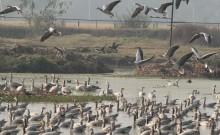NASA's historic Cassini mission is set to see its end this week, as it dives towards Saturn and burns up in its atmosphere. The unmanned robotic spacecraft's journey will end on September 15 after nearly 20 years in space.
Since it is one of the most ambitious space missions of the US National Aeronautics and Space Administration (NASA), the agency is giving us live updates and a countdown — through its page titled Cassini: The Grand Finale — on when and exactly how Cassini will meet its end.
Cassini — one of the most ambitious space missions ever — was planned, built, launched, and operated in collaboration between NASA, the European Space Agency and the Italian Space Agency Agenzia Spaziale Italiana. The spacecraft was then sent to the planet Saturn.
NASA has perfectly crafted its plan for the million-dollar spacecraft's farewell. Reports state that Cassini will transmit data to Earth till the very end, as a valediction for one of the greatest missions of the international space organisation.

NASA has planned its grand end because the machinery is very old and the spacecraft has reportedly run out of fuel.
Programme manager Earl Maize has said: "One of our lessons learnt, and it's a lesson learned by many missions, is to attach a gas gauge."
Launched on October 15, 1997, Cassini took nearly seven years to travel through the solar system to reach Saturn, which lies about 10 times further from the Sun than Earth is.
After its arrival near the planet, the spacecraft jettisoned ESA's Huygens lander, which touched down on Saturn's moon called Titan.

Cassini is the fourth space probe to visit Saturn and the first one to enter the planet's orbit. The spacecraft — ever since its arrival on Saturn in 2004 — studied the planet and its several natural satellites. It also helped discover lakes and seas of liquid methane on Titan.
The spacecraft also found a global ocean under the ice crust which may sustain life at another moon named Encleadus. Cassini reportedly also studied giant storms on Saturn and discovered hurricanes at both the poles.








